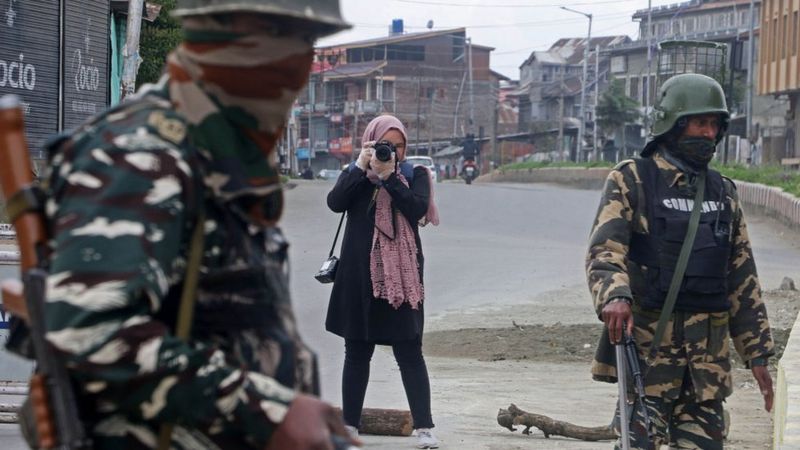‘Heaven on earth’ Kashmir gained this title due to its unreal splendid beauty. Unfortunately, the valley of roses has transformed into a valley of guns soon after the partition. The state (now Union Territory) being constantly under political turmoil, which eventually made the citizens pay the price. It cost them their families, properties, and mental stability.
Statistically, depression is most likely to envelop the population scale between 55.72% – 66.7% and majorly affecting the age group of 15-25 years. In comparison, population saturated in rural areas (84.73%) are more likely to get affected by depression than urban areas (15.26%.) If we look closely into the gender index in urban areas, then females fall under the range of 93.10% than males to be in 6.8% of range. World Health Organization (WHO) reported depression to be the fourth most dangerous illness. In Kashmir, for 12.5 million of the population, only 41 psychiatric hospitals, which are mostly affiliated to teaching purposes.
We can not ignore the fact that mental health is an integral part of overall health and defines the quality of living. The result of the chronology of staggering and frightful events has paralyzed citizens mentally snatching away the hope of reconcilement with their peaceful self.

Let’s try narrowing down common elements that may contribute to the liquidation of the mental stability of the general public.
- Political conflict: According to various statistical data provided on the internet, following the partition of India in 1947, the Kashmir valley has been subjected to continual political insecurity and ongoing conflict. In 1989, an insurgency began leading to the displacement of over 100,000 Kashmiri Pandits and 30 years of militant and military activity. By 2015, approximately 70,000 Kashmiris had lost their lives in the conflict and 8000 people had been reported missing.
Frequent confrontations with violence have been reported including displacement, exposure to crossfire, ballistic trauma, round-raids, torture, rapes, forced labor, arrests, kidnappings, and disappearances. According to various research engines, Office of the United Nations High Commission for Human Rights [OHCHR] 2018 reports states that an estimated 130-145 civilians were killed by security forces, between July 2016 and March 2018, and further 16-20 killed by armed groups during the same period.
With three nuclear-armed countries vying for territory in a strategically critical region, aids to the affliction and sense of insecurity amongst the public. Fitful events of violence and peace disrupt the chance of mental stability.
- Unstable and imbalanced lifestyles: Apart from physical injury, psychological distress is far more damaging and long-lasting, and it may pass down to the next generations if not taken proper care of. This futile condition majorly affects the ability of a person to perform daily ordinary tasks. Unemployment and loss of property also add up in this category.
- Lack of health care: As mentioned earlier that for the 12.5 million population only 41 psychiatric hospitals are available. Among these 41 hospitals, most of them are affiliated for teaching purposes, and only two hospitals Srinagar’s (GMC Srinagar and SKIMS hospital) provides mental health services, which should be a matter of major concern as most of the issues remain unresolved because the early signs are hardly ever deduced and more importantly, signs of mental illness are neglected.
- Constant feeling of insecurity: Swinging between harmony and turmoil, apart from being a matter of complicated affair, it sure is disturbing to adjust in the lifestyle. This sure has drenched the public into the cascading newfound mental illness.
- Covid-19: Intervals of horrific events with the aid of Pandemic has introduced a new crisis in the lives of Kashmiris. Since humans are social beings, a major part of mental stability majorly depends on the availability of having interactions both in person as well as on social media. Preventive methods like social distancing and the extended lockdown have further fueled the feeling of loneliness, especially among the elderly population. Lockdown and lack of access to the internet, the inefficiency of the goods to meet daily needs, lack of proper medications, and unavailability of an adequate number of hospitals and doctors, has introduced new measures of melancholy.
- Natural disasters: The earthquake of magnitude 7.6Mw in 2005 and flood in 2014 has left its watermark on the list of catastrophic events that have weakened the foundation of Kashmir.

- Unemployment and Poverty: According to Deccan Herald, At 16.2% Jammu and Kashmir have the second-worst unemployment rate among states/union territories in the country as educated youth struggle with neglect and lack of job-creation policy. According to the periodic labour force survey of urban areas for July-September 2019, Jammu and Kashmir were among six states that saw rising joblessness. The other states are Gujarat, Kerala, Andhra Pradesh, Punjab, and Himachal Pradesh. Besides, other data sources also indicate the severity of unemployment in J&K in the last 12 months. For example, the employment registration carried out by the Directorate of Employment last year witnessed three lakh registrations by postgraduates and PhD degree holders. According to the 2011 census, the total population of the insurgency-hit Himalayan region is 1.25 crore. More than 70% of the population in J&K is below 35 years of age and chronic unemployment and under-employment have spawned the problem. The Kashmir Chamber of Commerce and Industries also in its preliminary report suggested that five lakh job losses were recorded in the Kashmir region only post abrogation of Article 370 last August which was followed by lockdown to combat Covid-19 pandemic in March. Many unemployed youths believe that misgovernance, poor administration, and corruption have been the biggest problems in J&K. “Earlier the jobs in the government sector were distributed by ministers, bureaucrats, and top officials among their kith and kin. After the abrogation of Article 370, no jobs are being advertised and our future seems to be bleak,” said Suhail Ahmad, a post-graduate in Science.
After dismantling the system comprising the possible elements that have tormented Kashmiris over decades, it is important for the power authorities to take better and effective preparedness measures in order to bring about a helpful impact on the general public.
Methods like:
- The use of brief psychiatric symptom scales is useful as screening instruments because the rationale for most disease screening procedures is to provide a fast, economical method of detecting cases of suspected or potential illness in the general population. One of the most popular such scales is the Centre for Epidemiological Studies Depression Scale (CES-D Scale). This scale was developed to measure symptoms of depression in community populations. It is a self-report scale; respondents are asked to rate the frequency, over the past week.
- Regular on-foot surveys should be conducted in a short period of time.
- Development of mental health services with a protocol requiring active participation of civilians as well as power authorities should be implemented.
- Various awareness programs and rehabilitation centres should be conducted more often.
In conclusion, it is of utmost importance to understand and sympathize with complications related to mental health especially in areas which are torn by armed conflict.
Also Read:
Saffron Might Cease To Exist In Kashmir Forever As Production Declines Every Year
Nomads Of Kashmir Are On The Edge Of A Knife: Gujjars-Bakarwals Face Existential Crisis
















